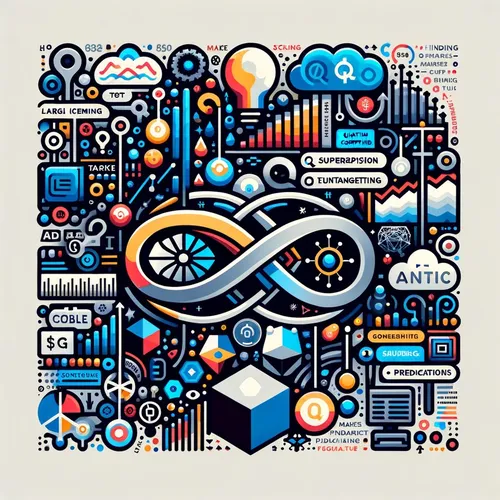Quantum Computing Breakthroughs: Boosting Chip Yields and Redefining Moores Law | Quantum Market Watch
- Author
- Inception Point Ai
- Published
- Fri 04 Jul 2025
- Episode Link
- https://www.spreaker.com/episode/quantum-computing-breakthroughs-boosting-chip-yields-and-redefining-moores-law-quantum-market-watch--66860971
This is your Quantum Market Watch podcast.
I’m Leo, your Learning Enhanced Operator, tuning in from a lab where the air crackles with the hum of dilution refrigerators and the quiet code of tomorrow. I’ll skip the small talk, because today’s news is as sharp as a qubit’s superposition and just as promising.
Here’s the headline electrifying the quantum space: SEALSQ, ColibriTD, and Xdigit announced a breakthrough quantum computing solution for semiconductor manufacturing, aiming to dramatically improve wafer yields for sub-7nm nodes. If that sounds technical, it is—but the implications ripple through nearly every sector powered by silicon. Imagine a world where chip shortages are blunted and Moore’s Law, once declared terminal, gets a new lease on life.
Let’s break down what’s actually happening here. At semiconductor fabs, IR Drop—the voltage loss that occurs as currents race through minuscule traces—has become a bottleneck for shrinking devices below 7 nanometers. Traditional simulations are buckling under the weight of these problems, tethered by the limits of classical computation. That’s where quantum enters. This new initiative leverages quantum computing’s unrivaled strength: solving complex partial differential equations that describe the behavior of electrons across a wafer. By modeling these physical processes with quantum algorithms, manufacturers can pinpoint defects, optimize layouts, and enhance yields—translating directly to more robust supply chains and lower costs for everything from smartphones to satellites.
In collaboration with hardware and software innovators, the project will use quantum processors to simulate these intricate systems far faster than any supercomputer could. It’s reminiscent of how Feynman imagined quantum machines; where brute force ends, quantum elegance begins. Researchers like Dorit Aharonov and John Preskill have long said the material world is quantum, so why not simulate it on quantum terms?
The benefits aren’t abstract. With each jump in yield, costs drop, innovation accelerates, and new capabilities emerge not just in computing, but in AI, communications, health, energy, and national security. More chips, less waste, the cycle of progress reborn at the quantum level.
For those picturing the classic lab: the scene is equal parts old and new. You’ll find rotary pumps beside racks of entangled ion traps, engineers running optimization queries on a cloud interface even as a technician fine-tunes the laser calibration. There’s drama here—a wafer’s fate can hinge on a quantum calculation’s success or failure. Each day is a reminder that, much like a qubit in superposition, our technological destiny is not fixed. It’s a probability distribution waiting to be nudged by discovery.
As quantum thinking seeps into manufacturing, we see parallels in global affairs: both the EU and South Korea rolled out fresh strategies this week to be quantum leaders by 2030, betting that whoever harnesses these tools first will shape the next industrial revolution.
Thanks for listening to Quantum Market Watch. Have a burning question or want specific topics explored? Email me any time at [email protected]. Don’t forget to subscribe—and remember, this has been a Quiet Please production. For more details, check out quietplease dot AI.
For more http://www.quietplease.ai
Get the best deals https://amzn.to/3ODvOta
This content was created in partnership and with the help of Artificial Intelligence AI
